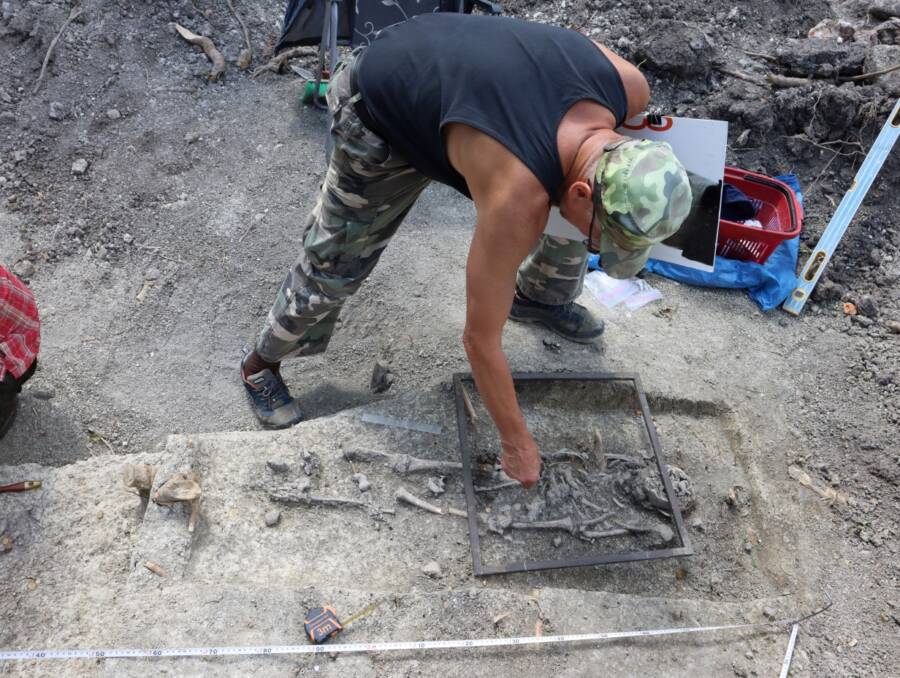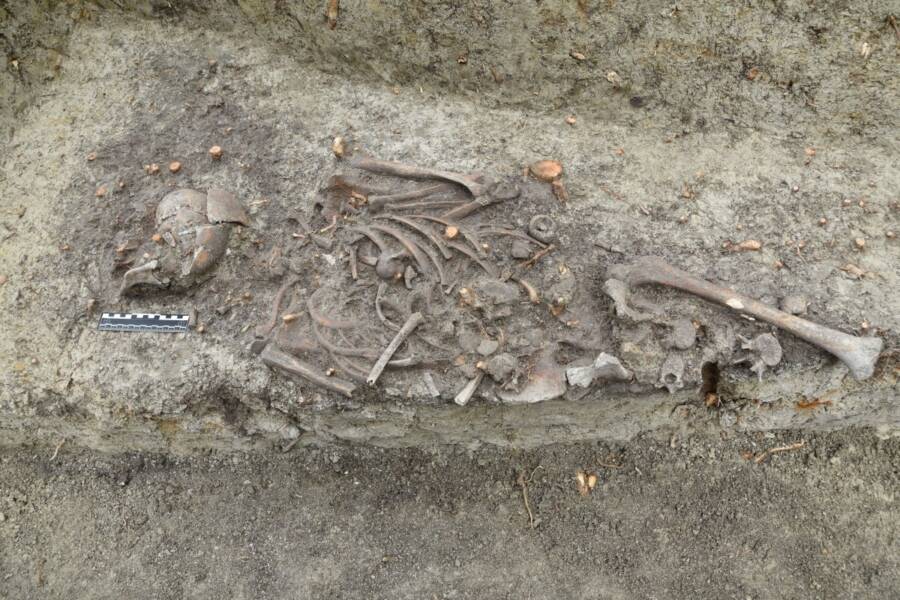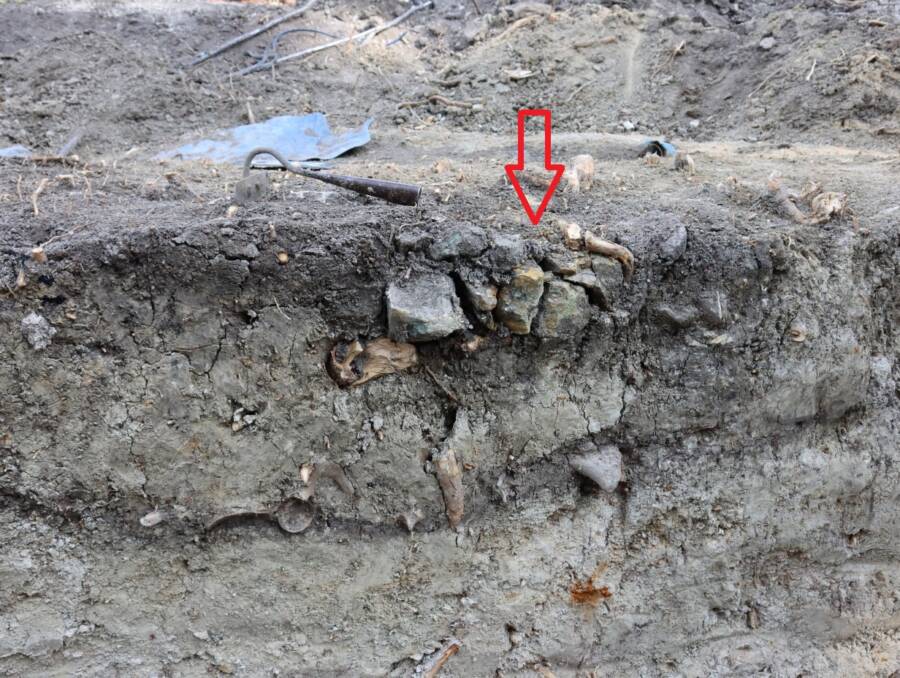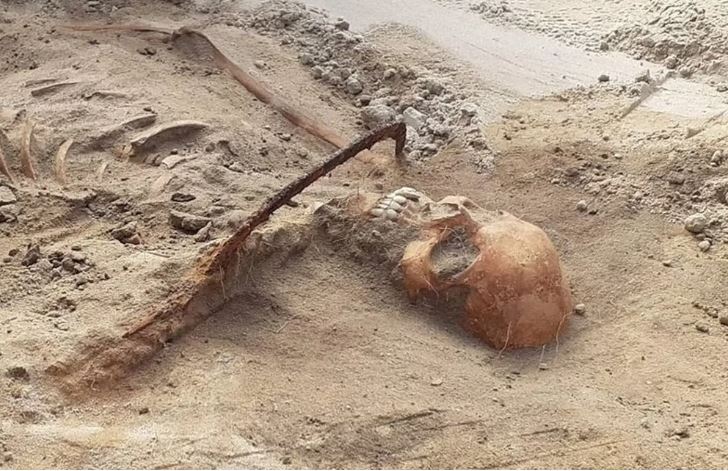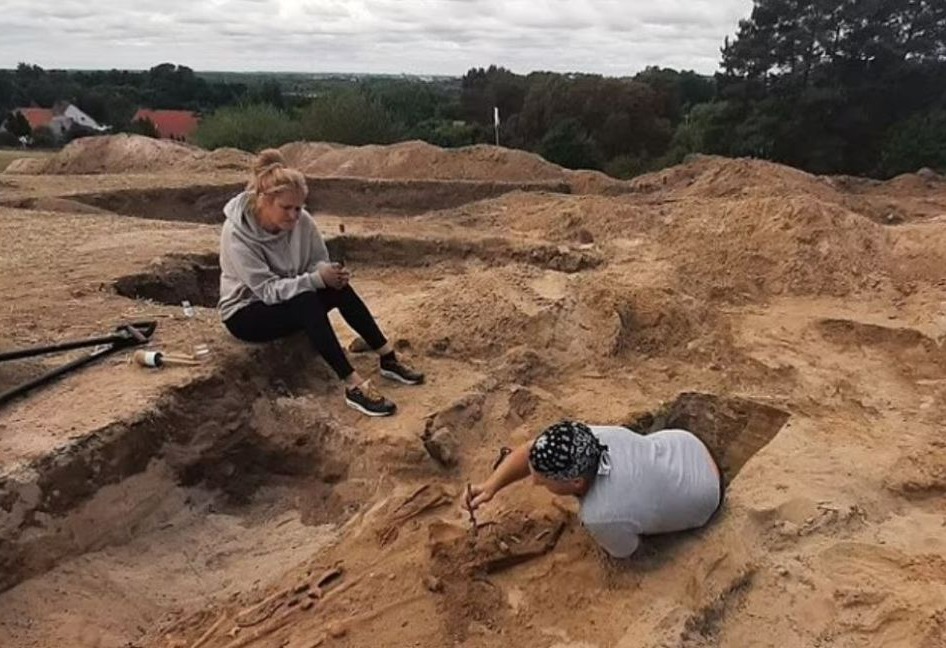RESEARCHERS have uncovered a medieval graveyard of “vampire children” buried with protections to stop them rising from the dead.
The site was dug up in Koszalin, northwest Poland, with two child skeletons uncovered in the earth.
Archaeologists found the so-called “revenant” graves with the children buried in special pits without coffins.
Local folklore from the time shows the term referred to people who would come back from the dead to torture the living.
People would give them horrific burials, taking extreme measures to protect themselves.
The discovery in Góra Chełmska, a ridge near the city of Koszalin, dates back to the 13th century.
One of the scientists said the site bore signs of an “anti-vampire” burial, in a type of grave found all across Europe.
They were designed to stop the dead from rising – such as by placing large stones on the legs of the person being buried.
The body might also have been pierced with a lance to fix it permanently to the ground.
These children were found in a spot not connected to any of the other known historical burial sites in the area.
The youngsters had been laid on their backs with their skulls facing west.
One of the children had even been decapitated.
The skull had also been laid facing down with stones on its torso.
It was marked by two pillars, the team said, after they found holes in the ground that had been well-preserved.
The discovery was revealed by the Lublin Provincial Conservator of Monuments on Facebook.
One conservator said: “Burying with the face to the ground, cutting off the head or pressing the body with a stone are among the methods used to prevent a person believed to be a demonic being from leaving the grave.”
The skeletons are set to be analysed properly as archaeologists dig deeper into the history of their burials.
A similar discovery was made in September last year when a graveyard of “child vampires” were excavated in the Polish village of Pien.
Villagers made sure to bury the child face-down so that if they awoke, they would bite the ground rather than suck the blood from the people above them, The Times reports.
One of the “little vampire” skeletons – believed to belong to a six year old – also had a foot held in a padlock in a bid to stop it getting out of the grave.
Myths surrounding vampires date back to as early as the 11th century in eastern Europe – and it is not uncommon for skeletons bearing the marks of these superstitions to be unearthed.
